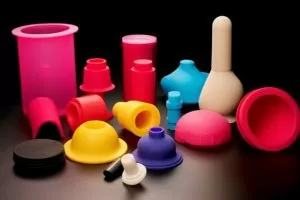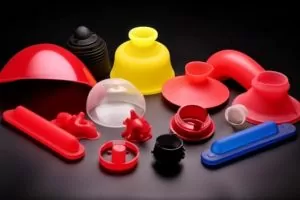Introduction
In the sphere of consumer commodities, especially those designed for interfacing with foodstuffs or for application upon the human epidermis, discerning between food-grade and non-food-grade substances is paramount for safeguarding health and well-being. This holds particularly true for items fabricated from silicone rubber, a substance esteemed for its malleability, robustness, and chemically inert characteristics. Nevertheless, it’s pivotal to recognize that silicone’s quality varies. Grasping the distinctions between food-grade silicone and its non-edible counterparts is imperative for both fabricators and end-users.
Food-grade silicone is distinguished by the unique attributes that render it innocuous for utilization in contexts where it interacts directly with edibles or is incorporated into products like infant soothers and medicinal apparatus. These attributes encompass being non-toxic, devoid of scent, and exhibiting exceptional resilience to thermal vicissitudes, thereby making it a favored option in culinary and healthcare realms. The crux of this discourse is to dissect the subtleties of the food-grade silica gel material and rubber commodities, accentuating the methodologies to ascertain and authenticate the most considered food-grade-grade caliber of silicone, ensuring the everyday items we employ are harmless for us and our kin.
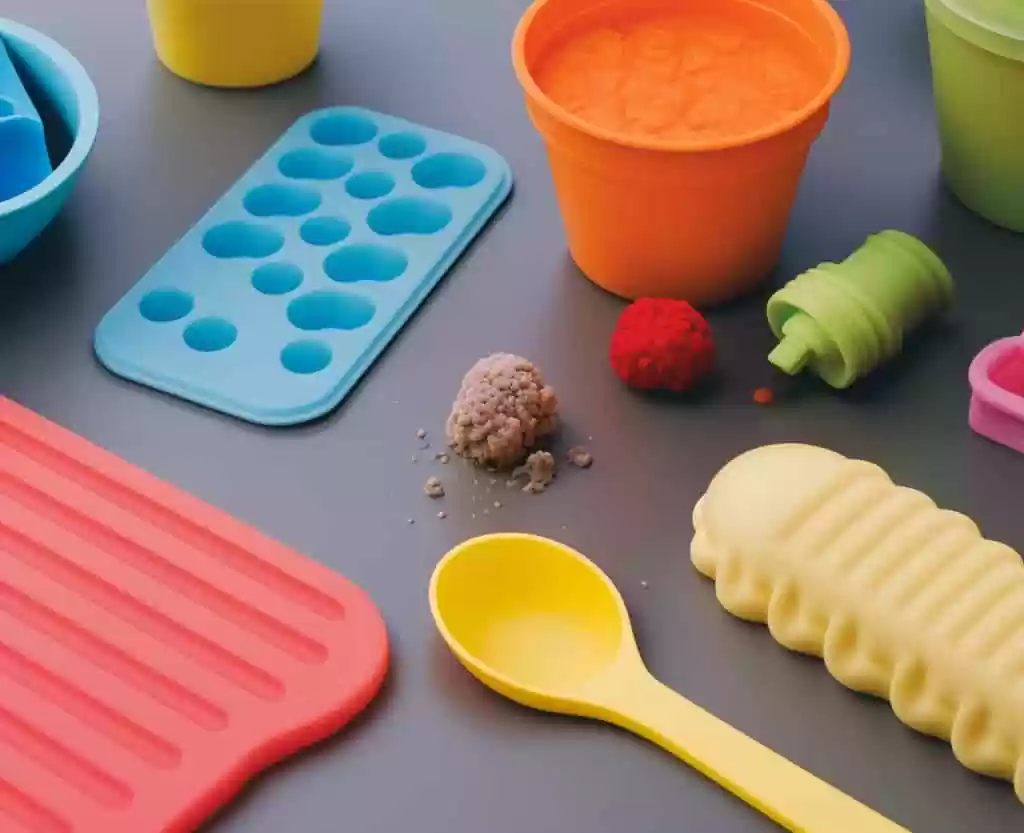
In the ensuing segments, we shall scrutinize the norms and mandates that oversee and distinguish food-grade silicone, its pivotal characteristics, and the approaches to identify premium, food-safe silicone merchandise from those inappropriate for food contact or human dermal application. By comprehending these facets, consumers can execute judicious choices, and manufacturers can affirm their offerings adhere to the utmost standards of safety and excellence.
Food-Grade Silicone rubber
Food-grade silicone emerges as a pristine variant of silicone rubber, meticulously crafted and refined to guarantee safety in scenarios entailing interaction with food or human physiology. This silicone variant is characterized by its adherence to stringent regulatory criteria, such as those established by the United States Food and Drug Administration (FDA) and the European Union’s food contact stipulations. Intrinsically non-toxic, devoid of scent and flavor, it steers clear of any chemical extenders or additives that might seep into food or the human corpus.
Food-grade silicone is defined by several salient traits:
Non-Toxicity:
It is inherently free from hazardous elements, ensuring its suitability for food contact.
Temperature Endurance:
Exhibits exceptional tolerance to a spectrum of temperatures, thus being optimal for culinary use, spanning from deep freeze to baking scenarios.
Chemical Imperturbability:
Remains unreactive to most chemicals and edibles, preserving its form and not meddling with the gustatory or olfactory properties of the food it encounters.
Durability:
Boasts a robust resistance to deterioration, promising an extended lifespan even under regular utilization.
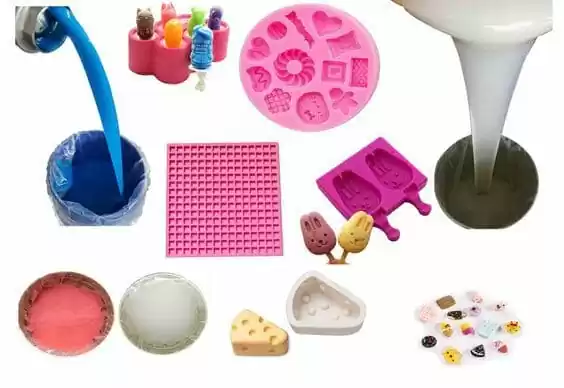
Distinguishing from Regular Silicone rubber
Despite superficial resemblances to food-grade silicone, ordinary silicone harbors crucial disparities:
Constituents:
Regular silicone may harbor fillers or additives not deemed suitable for food interaction, which could degrade over time, particularly under extreme thermal conditions, potentially releasing undesirable chemicals.
Adherence to Safety Protocols:
Ordinary silicone is not bound by rigorous food safety regulations, and thus, might not undergo thorough testing for toxicity and chemical interaction as food-grade silicone does.
Utility Scope:
Regular silicone finds its application predominantly in non-food-related sectors like automotive or electronics, where the stringent demands of food safety are not a primary concern.
In essence, food-grade silicone stands as a specialized, secure, and enduring substance, specifically engineered for use in environments where direct contact with food or the human body occurs. Its distinctive properties and conformity to safety norms distinguish it from ordinary silicone, rendering it an optimal choice for a diverse array of consumer products, encompassing kitchen implements, infantile products, and medical apparatus.
Principal Characteristics of Culinary-Grade Silicone
Resilience to Temperature Fluctuations and Abrasion
A salient characteristic of culinary-grade silicone is its capacity to endure an extensive spectrum of thermal conditions. This attribute renders it a highly adaptable substance for myriad uses:
Elevated Temperature Fortitude: Culinary-grade silicone demonstrates a remarkable tolerance to temperatures typically extending from -40°C to 230°C (-40°F to 446°F). This trait is notably advantageous in culinary contexts, such as in the crafting of baking mats, culinary spatulas, and confectionary molds, where frequent exposure liquid silicone to elevated heat is common. It remains steadfast, not succumbing to melting, distortion, or deterioration under intense thermal conditions, ensuring its safety in oven usage and in managing heated edibles.
Resistance to Frigid Temperatures: In a similar vein, culinary-grade silicone retains its pliancy and attributes even in sub-zero environments. It is apt for cryogenic applications, such as in the creation of ice cube receptacles and cold storage solutions for food. Contrary to certain materials, it does not grow brittle or fracture in the chill.
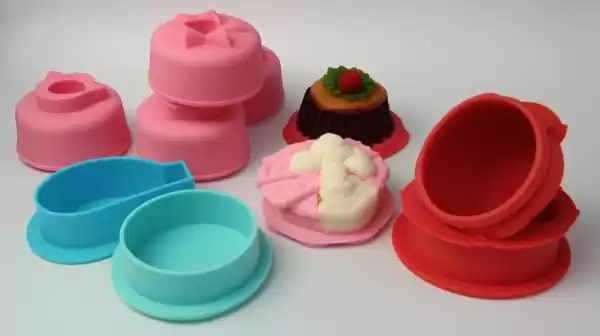
Abrasion Resilience: In addition to its thermal robustness, culinary-grade silicone is acclaimed for its resistance to wear and tear. It is not prone to easy rupture, decomposition, or erosion, even under consistent usage. This enduring nature ensures that silicone items are not subjected to frequent replacement, positioning them as a cost-efficient and eco-friendly selection.
Safety and Longevity
The safety and enduring nature of culinary-grade silicone are imperative for its utilization in products that regularly interact with foodstuffs and the human physique:
Innate Non-Toxicity: Culinary-grade silicone is fundamentally non-toxic and devoid of injurious compounds like BPA, lead, or phthalates. This is crucial in products like infant teething toys, where safety is paramount. Its inert nature guarantees that it does not impart chemicals into edibles or beverages, preserving the authenticity and flavor of the food.
Adapted for Extended Utilization: The inherent durability of culinary-grade silicone suggests that it does not succumb to degradation swiftly over time. This prolonged lifespan ensures that silicone items are not in need of frequent replacement, diminishing waste and offering superior sustainability in comparison to various other substances. Furthermore, its resistance to stains, odors, and microbial proliferation renders it a sanitary option for kitchen and medical use.
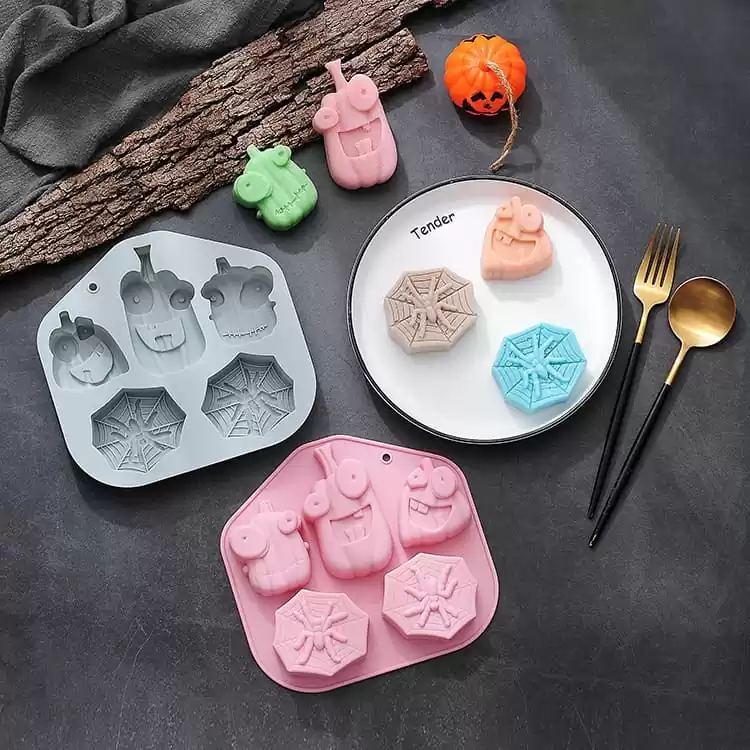
In summary, the combination of thermal and abrasion resistance, together with its non-toxic constitution and longevity, elevates culinary-grade silicone as an exemplary material for a broad array of applications, particularly in environments where safety, hygiene, and enduring utility are of the essence.
Dentifying High-Quality Food-Grade Silicone Rubber
Evaluative Techniques for Visual and Haptic Examination The task of appraising the caliber of food-grade silicone items can be intricate, yet several visual and haptic evaluative techniques exist to facilitate this:
Homogeneity in Hue and Texture: Prime food-grade silicone ought to exhibit consistent hue and texture throughout. Variations in color, opaqueness, or texture irregularities could suggest inferior quality or the existence of contaminants.
Flexibility Assessment: Gently flex or twist the silicone item. Exemplary food-grade silicone materials should demonstrate extreme pliability without manifesting signs of bleaching or fissures. Material that pales markedly or exhibits fragility might not be of esteemed quality.
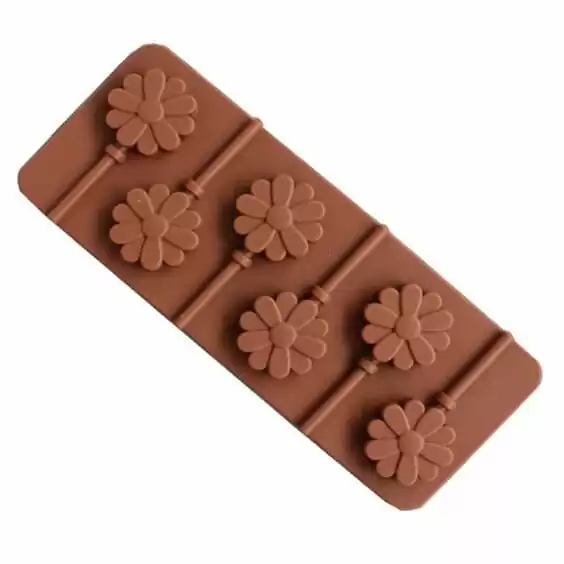
Sensory Analysis: The surface of food-grade silicone should convey a smooth sensation upon contact, eschewing any greasy or adhesive quality. Lower-tier silicone products frequently possess a sticky texture, indicative of filler inclusions.
Olfactory Evaluation: Preeminent food-grade silicone should lack any fragrance. A pronounced chemical or synthetic aroma may signal the incorporation of impurities or inadequate curing of the food grade silicone material.
Raw Constituents and Fabrication Techniques
The integrity of food-grade silicone is predominantly influenced by the various purchasing raw materials and constituents utilized and the fabrication methodologies applied:
Exogenous Raw Constituents: Numerous superior silicone products are crafted using raw materials of foreign origin. Such imported raw materials are often subject to more rigorous quality assurance and purity norms, fostering a more refined end product.
Platinum-Based Catalysts: The application of platinum-based catalysts in the curing phase stands as a benchmark of superior food-grade silicone. This approach is more hygienic, environmentally friendly and efficacious compared to alternative methods, ensuring the absence of deleterious by-products in the silicone.
Vulcanization Agents: The choice of vulcanization agent during the production process is pivotal. For food-grade silicone, it’s imperative to utilize safe, non-toxic vulcanization agents, affirming the product’s suitability for food contact.
Manufacturing Ambiance: The milieu in which the silicone is fabricated is also consequential. A regulated, uncontaminated manufacturing setting aids in averting contamination, thereby upholding the silicone’s integrity.
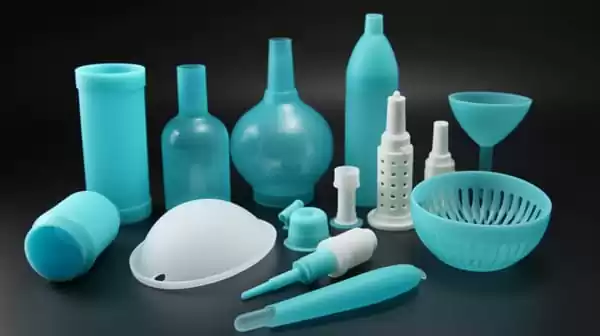
In sum, discerning the quality of food-grade silicone involves an amalgamation of visual and haptic inspections, coupled with an insight into the materials and methodologies employed in its creation. By heeding these aspects, consumers can ascertain the selection of the most secure and dependable food grade silicone products, for their requirements.
Applications in Food and Medical Industries
The versatility and safety of food-grade silicone have led to its widespread use in a variety of applications, particularly in the food and medical industries.
Uses in Kitchen Utensils and Food Contact Materials
Food-grade silicone’s unique properties make it an ideal material for kitchenware and other food contact materials:
Kitchen Utensils: Silicone is widely used in kitchen utensils such as spatulas, pastry brushes, and tongs due to its heat resistance and non-reactive nature. These utensils can withstand high cooking temperatures without melting or imparting any flavors to the food.
Baking Needs: Silicone’s flexibility and non-stick characteristics are perfect for baking applications. Products like cake molds, cupcake liners, and baking mats made from food-grade silicone offer easy release of baked goods and simplify cleanup.
Candy Molds: The non-toxic and temperature-resistant qualities of food-grade silicone make it suitable for candy-making. Silicone candy molds are popular for their ease of use and the intricate shapes they can create.
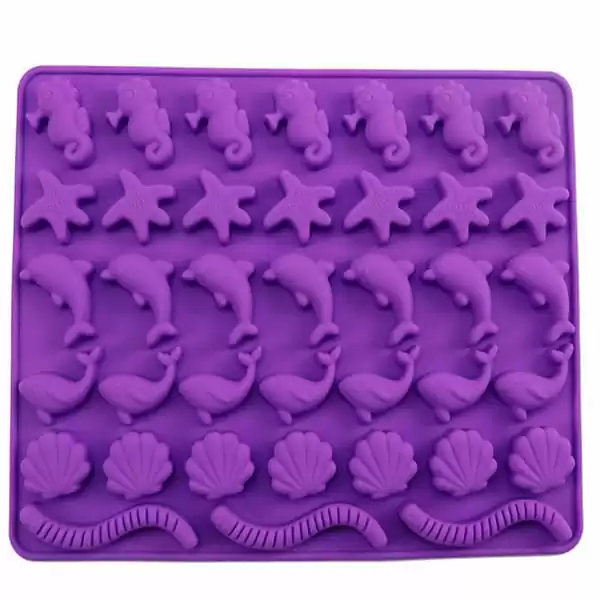
Food Storage: Silicone bags and containers are increasingly used for food storage due to their durability and resistance to odors and stains. They are a reusable and eco-friendly alternative to single-use plastics.
Compliance in Medical Devices
In the medical industry, the standards for silicone rubber products are even more stringent:
Medical-Grade Silicone: This type of silicone is used in various medical devices and implants. It must meet higher purity and biocompatibility standards, ensuring that it is safe for prolonged contact with the human body.
Applications: Medical-grade silicone is used in a range of products, from tubing and catheters to prosthetics and implants. Its flexibility, hypoallergenic properties, and easy sterilization make it invaluable in medical settings.
Safety Standards: Medical-grade silicone products must comply with rigorous safety standards and undergo extensive testing to ensure they are safe and effective. Regulatory bodies like the FDA in the United States and their counterparts in other countries oversee these standards.
In conclusion, food-grade silicone’s adaptability and safety profile have made it a material of choice in both the food and medical industries. From kitchen gadgets that enhance our cooking experience to medical devices that improve health outcomes, the applications of food-grade silicone are both diverse and critical.

Conclusion
In our perusal of culinary-grade silicone, a revelation has emerged regarding the paramountcy of electing apt silicone constituents, particularly in scenarios entailing alimentary contact and medicinal applications. The salient attributes of culinary-grade silicone — its innocuousness, resistance to thermal extremities, and enduringness — elevate it beyond mere versatility, rendering it a judicious selection for both consumers and fabricators.
In the culinary sphere, encompassing utensils and sustenance preservation, culinary-grade silicone emerges as a steadfast and salubrious substitute to conventional materials. Its fortitude against extreme thermal variations and imperviousness to attrition assure that our culinary practices and aliment preservation are executed with efficacy and safety. In a parallel vein, within the medical sector, the adoption of medical-grade silicone in apparatuses and prostheses underscores the material’s pivotal role in scenarios demanding utmost safety and biological compatibility.
The onus of certifying the safety and caliber of silicone wares is a shared endeavor. Producers are obligated to conform to stringent standards and validation procedures, ensuring their merchandise genuinely meets the culinary-grade and medical-use criteria. Consumers, in their role, ought to be erudite and vigilant, opting for products that adhere to these elevated benchmarks and comprehending the ramifications of their choices on wellbeing and safety.
To encapsulate, culinary-grade silicone epitomizes a synthesis of ingenuity, security, and ecological responsibility in our everyday material choices. By prioritizing the utilization of superior, compliant, environmentally friendly silicone in products, we collectively forge towards a more healthful, secure, and ecologically conscientious society.

